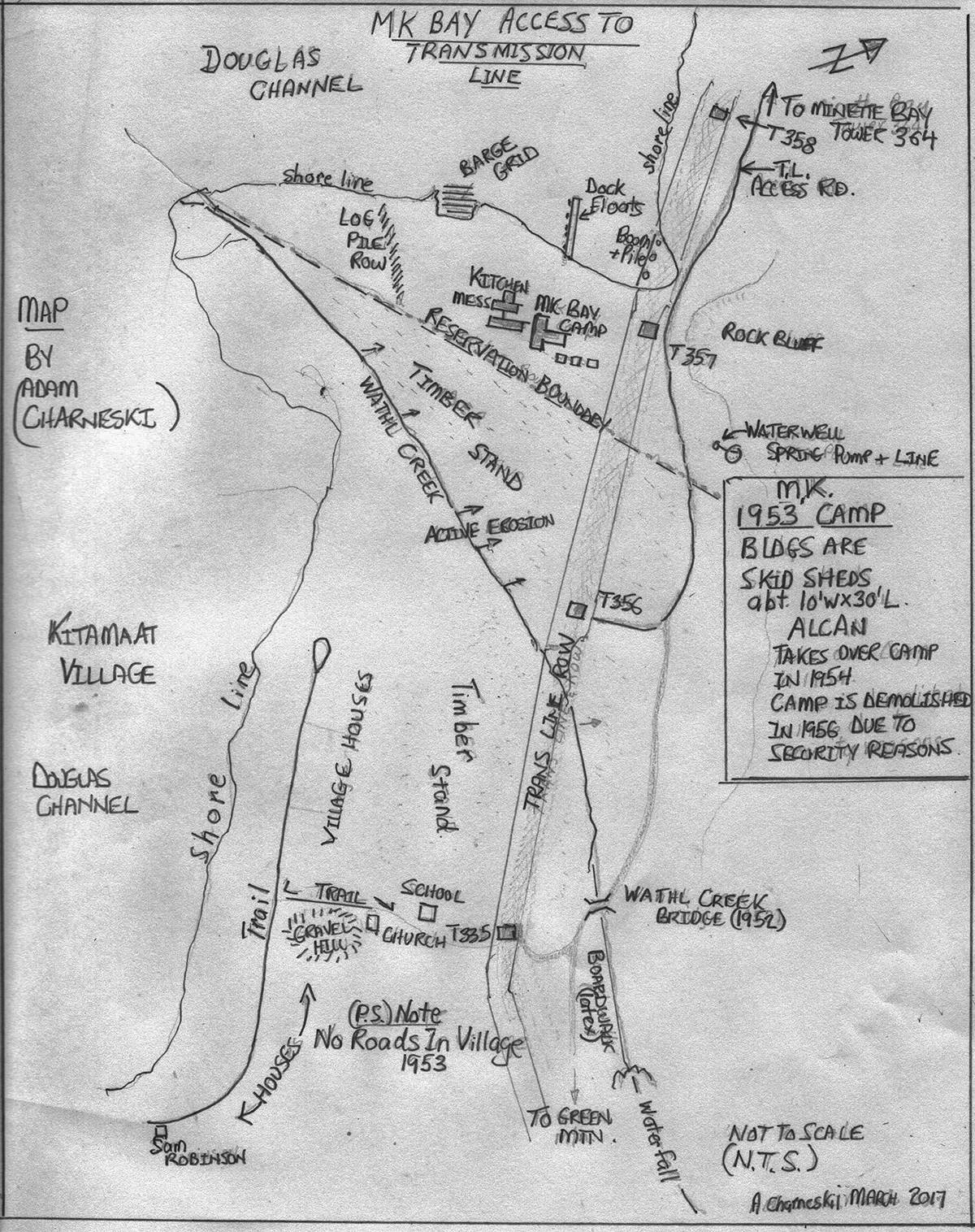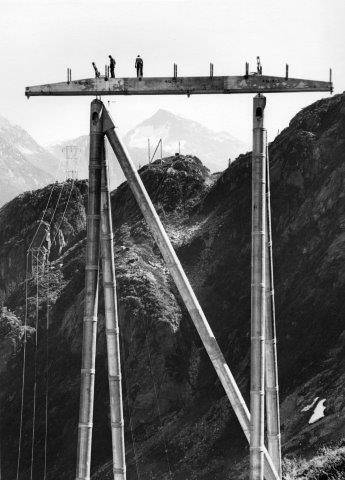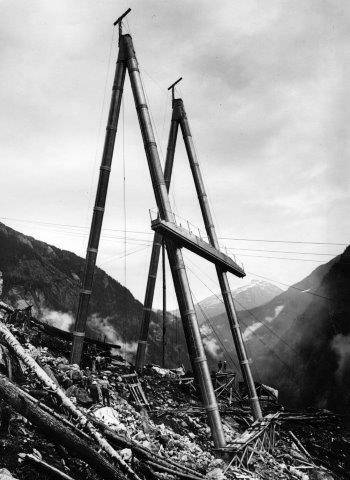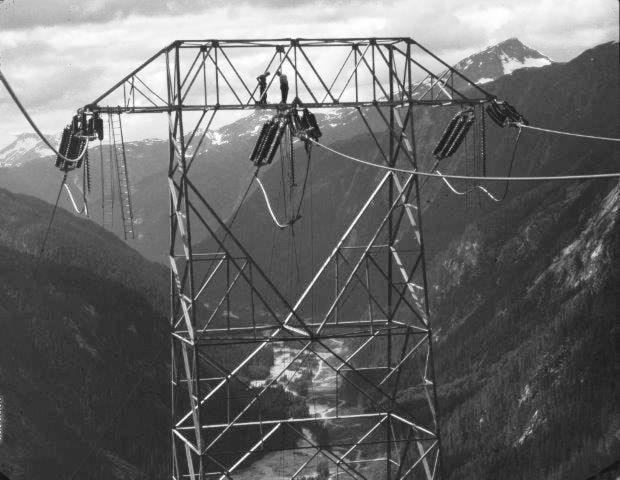By Walter Thorne
In the early 1950s Kitimat was a wild industrial hub overflowing with workmen.
On the western side of Douglas Channel, from the beach near the Delta King riverboat, was a network of roads and camps. There, Kitimat Constructors, a large and powerful conglomerate of thousands of construction folk, was supreme.
But on the eastern side, just outside Kitamaat’s reserve lands, it was a whole different empire. There a conglomerate called Morrison Knudsen - known as MK and based in Boise, Idaho - was in charge of an emerging industrial supply depot.
They were entrusted with the industrial development of the energy corridor and infrastructure at Kildala, Kemano and the Kenney Dam near Vanderhoof, which included 14 camps with more than 4,000 workers.
From their depot between Maggie Point and Wathl Creek was a short-lived 200-man camp called MK Bay. The Crawley McKracken Supply Company kept the camp organized, stocked and well fed - the meals created by camp chefs were legendary. The workers, most of whom were members of the powerful Rock and Tunnel Workers Union, were certainly well looked after.
Adam Charneski recalls the housing was all on skids. The beach in those days extended much further out into Douglas Channel before falling away into the depths.
Morrison Knudsen initially established a barge grid near the current site of the MK Bay Marina breakwater. The barge grid was crazy busy with dolphin dock pilings and poles and adjacent, on the inner side, a small boats float.
New barges were frequent, transporting transmission cable, pieces of steel towers, D-9 caterpillars, cement mixers, front-end loaders, dump trucks, etc. and the gravel lay-down area was piled high with organized supplies.
In no time a wooden bridge had been completed spanning Wathl Creek, and a road heading off to Green Mountain and the Dala River quickly appeared.
An effective helicopter port was developed in Kemano and this was the debut for an upstart helicopter outfit called Okanagan Helicopters.
This company, which eventually morphed into Canadian Helicopters, reportedly made a fortune off the Kitimat project - its choppers had a major role in constructing the remote transmission towers and stringing the cables.
Imagine the cacophony of rumbling bulldozers, approaching tugs and barges, departing choppers and directing foremen. It would have been one frenzied location.
Young 21-year-old Charneski was for some time in charge of the MK Bay camp. Interestingly, he went on to a 55-year career with Alcan and the powerline corridor connecting the Kemano powerhouse and Kitimat.
Over the years Adam saw and dealt with many of the catastrophes and challenges, including the January, 1955, Kildala Pass avalanche which destroyed the line.
After the Alcan project was complete and the line was energized, MK Bay’s role as a supply depot and staging area diminished to nothing. The camp had a short life, starting in 1952 and being demolished in 1956.
Following a major storm, a huge section of the gravel land just slumped into the channel and disappeared, although much of the dock structure was spared.
Alcan eventually relinquished control of the MK Bay dock and barge grid to the new Regional District of Kitimat Stikine. The district invested money excavating, dredging and installing pilings, floats and a fuel dock for the emerging marina.
This arrangement worked for about 50 years until just recently when the regional district passed on the torch to the Kitamaat band council.
Currently the Mill Bay Marina Corporation operates the marina at MK Bay and they have many plans for an exciting future.
Clearly the Morrison Knudsen Company had a major impact on the development of the north end of Douglas Channel. Their legacy is the MK Bay marina which bears its name and is a vital part of what Kitimat offers its tourists and visitors.



